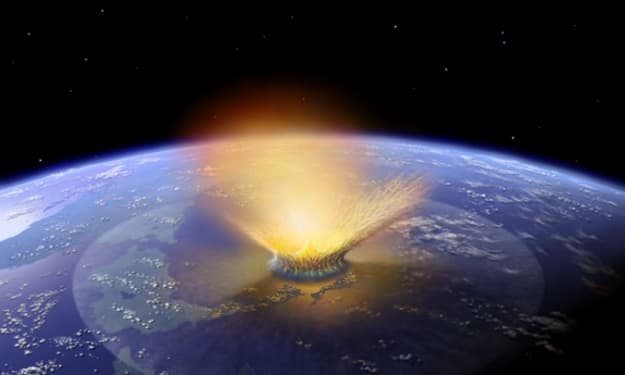Understanding Natural Climate
Sure, here's an in-depth look at natural climate and the environment:

Natural climate encompasses the long-term average of weather conditions in a region, typically over 30 years or more. This concept includes various elements such as temperature, precipitation, humidity, wind patterns, and seasons. These elements are influenced by multiple natural factors that operate on different timescales.
Factors Influencing Natural Climate
Solar Radiation: The primary driver of climate is the Sun. Solar radiation heats the Earth's surface, causing the atmosphere to warm. The distribution of solar energy varies with latitude, leading to the formation of distinct climate zones, such as tropical, temperate, and polar regions.
Earth's Orbit and Tilt: Milankovitch cycles describe the variations in Earth's orbit and axial tilt over thousands of years, influencing the distribution and intensity of solar radiation received by the planet. These cycles contribute to the natural climate patterns, including the ice age cycles.
Volcanic Activity: Volcanic eruptions can inject large quantities of aerosols and ash into the stratosphere, reflecting solar radiation and leading to temporary cooling of the Earth's surface. Historical examples include the eruption of Mount Tambora in 1815, which caused the "Year Without a Summer."
Ocean Currents: The ocean plays a critical role in regulating climate by storing and transporting heat around the globe. Major currents like the Gulf Stream and the El Niño-Southern Oscillation (ENSO) affect regional climates by altering sea surface temperatures and atmospheric conditions.
Atmospheric Composition: Naturally occurring greenhouse gases, such as carbon dioxide (CO₂), methane (CH₄), and water vapor, trap heat in the atmosphere, maintaining the Earth's temperature within a range that supports life. Variations in these gases over geological timescales have led to significant climate changes.
Natural Climate Variability
Natural climate variability refers to the inherent fluctuations in climate patterns over short and long timescales. These variations can result from interactions among different components of the Earth's system, including the atmosphere, oceans, land surfaces, and ice masses. Key examples include:
El Niño and La Niña: These are phases of the ENSO cycle, characterized by periodic warming (El Niño) and cooling (La Niña) of the central and eastern tropical Pacific Ocean. They influence weather patterns globally, causing droughts, floods, and other climate anomalies.
Pacific Decadal Oscillation (PDO): This long-term ocean fluctuation affects the Pacific Ocean's surface temperature and can last for several decades. It influences climate patterns across North America and other regions.
Atlantic Multidecadal Oscillation (AMO): A cycle of long-duration changes in the sea surface temperature of the North Atlantic Ocean, impacting rainfall patterns, hurricane activity, and regional climates.
Natural Climate Zones
Natural climate zones are regions with distinct climates that result from the interaction of various factors mentioned above. Some major climate zones include:
Tropical Climates: Found near the equator, characterized by high temperatures and significant rainfall year-round. Examples include the Amazon Rainforest and the Congo Basin.
Arid and Semi-Arid Climates: These regions receive minimal rainfall, leading to deserts and drylands, such as the Sahara Desert and the Australian Outback.
Temperate Climates: Located in mid-latitudes, these areas experience moderate temperatures with distinct seasons. Examples are found in North America, Europe, and parts of Asia.
Polar Climates: Found near the poles, these regions have extremely cold temperatures and ice-covered landscapes, such as Antarctica and the Arctic.
Natural Climate and the Environment
The natural climate profoundly influences the environment, including ecosystems, biodiversity, and human activities. Here are some key aspects of this relationship:
Ecosystems and Biodiversity: Climate determines the types of vegetation and animal life that can thrive in a region. For example, tropical rainforests support diverse ecosystems due to their warm, moist conditions, while arid regions have adapted species that can survive with minimal water.
Natural climate refers to the long-term weather patterns of a region that occur without significant human influence. It includes elements like temperature, precipitation, humidity, and wind, driven by factors such as solar radiation, Earth's orbit, volcanic activity, ocean currents, and atmospheric composition. These natural drivers create distinct climate zones—tropical, arid, temperate, and polar—each supporting unique ecosystems.
Natural climate variability involves periodic changes, like the El Niño-Southern Oscillation (ENSO), which affects global weather patterns. Volcanic eruptions can cause temporary cooling by injecting aerosols into the atmosphere, while ocean currents distribute heat, influencing regional climates.
About the Creator
Enjoyed the story? Support the Creator.
Subscribe for free to receive all their stories in your feed. You could also pledge your support or give them a one-off tip, letting them know you appreciate their work.





Comments (1)
Good 👍 thought good reading this word and work